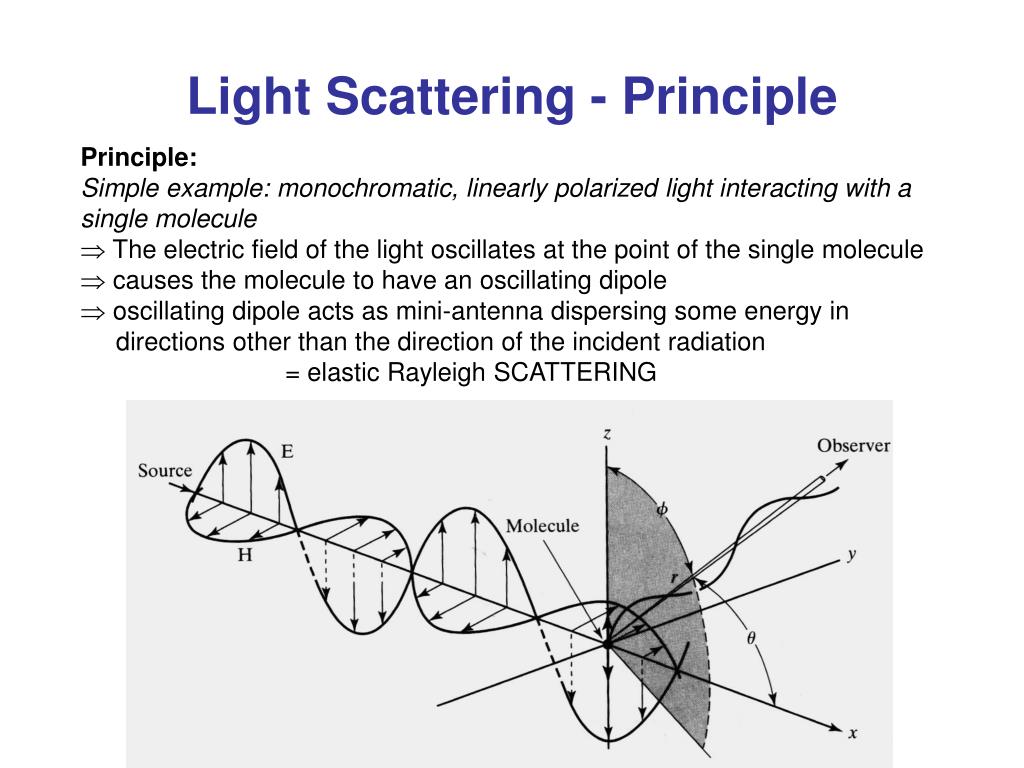

For a known scattering angle, θ, and refractive index, n, the scattering vector q is calculated from the following expression:Ī given correlation function C(τ) is deconvoluted into either a single-exponential, stretched-exponential, or sum of exponentials. Forward-scatter, on the other hand, is overly sensitive to larger species, and can be used to detect the presence of even a small amount of aggregated protein. Backscatter, typically referring to angles much larger than 90 o, is very commonly used to measure the sizes of small, monomer-sized proteins. The convention in light scattering is to refer to small scattering angles as forward-scatter, and large-scattering angles as backscatter. This expression can be simplified to a proportionality: Where the Boltzmann constant (k B), temperature (T), and bulk viscosity (η) are all known values. The relationship between D t, measured in DLS, and hydrodynamic size, d h, is inverse, and is given by the Stokes-Einstein Equation: It is important to note that the diameter obtained from DLS, often referred to as the hydrodynamic diameter ( d h), is inversely proportional to the diffusion coefficient ( D t). As will be shown below, the configurability of the correlator is key to measuring otherwise difficult heterogeneous The challenge in this case is choosing the appropriate correlator layout Partially aggregated protein might span 1-2 orders of magnitude in hydrodynamic Sizes on the order of several hundred nanometers or greater. Protein aggregates can easily reach large A high-speed correlator is necessary to measure the size Protein monomers are typically < 10 nm, with many as Many common globular proteins are very small in This is the basis for measuring a particle size distribution. The signal that arises from the scattered intensity from the laser light is acquired and transformed into an autocorrelation function. These fluctuations are directly related to the motion of particles. In order to demonstrate this principle, we compare aggregation studies conducted on pharmaceutical-grade monoclonal antibody (mAb), with results obtained for a common protein, serum albumin (BSA).Ĭheck out our informative video on Monoclonal Antibodies and DLS IntroductionĭLS relies on the principle that freely diffusing material, moving randomly due to Brownian motion, will produce rapid fluctuations in scattered laser light. The timescale of these intensity fluctuations is on the order of tens of nanoseconds to hundreds of milliseconds.
#Protein dynamic light scattering full
When DLS is used to its full potential, aggregation of proteins can be detected and the size of monomeric protein can be determined to a very high degree of certainty. Failing to adhere to these strict and exacting standards compromises the processability, activity, and shelf stability of antibody-based products. In all these applications it is essential that antibodies remain intact, and monomeric. These highly versatile proteins are used as the major functional element in immunoassays and other rapid diagnostics, in vaccine production, and as the primary component of a wide array of injectable protein drugs. One of the fastest growing classes of pharmaceutically active biologics are antibodies. Dynamic light scattering (DLS) is a powerful technique that is amenable to measurement of biological samples, particularly proteins and biopolymers.


 0 kommentar(er)
0 kommentar(er)
